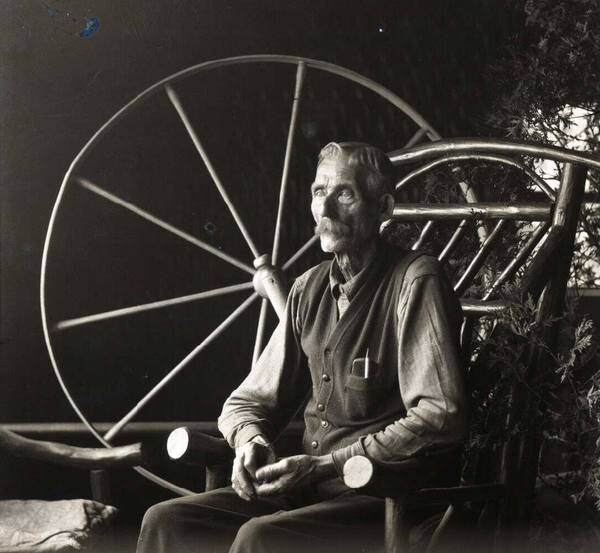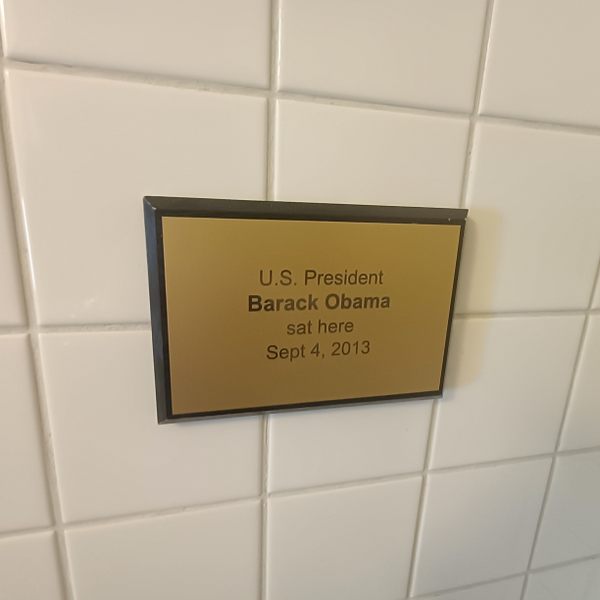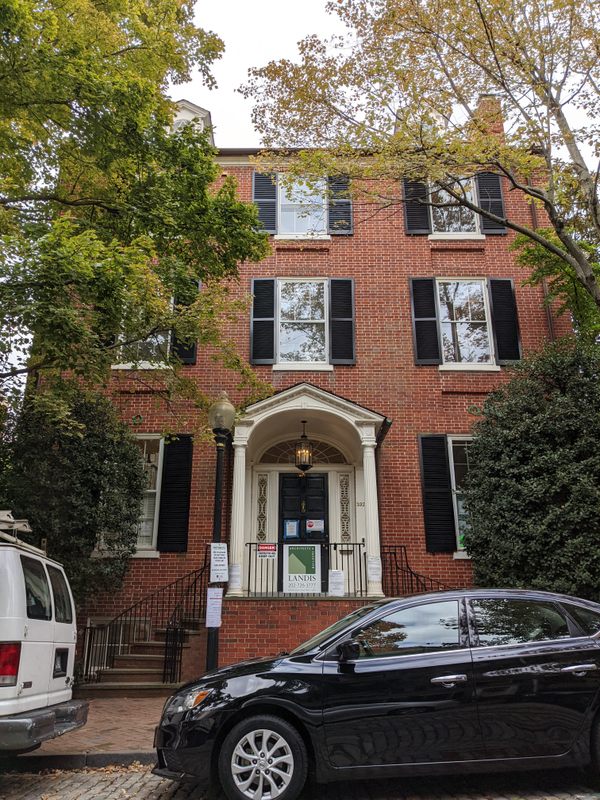The Curious History of New England’s Hermit Tourism
The birds were her only family. In the decades after the American Revolution, gray and wearing rags, the local hermitess Sarah Bishop only descended from her tiny cave in the mountains to attend church in Ridgefield, Connecticut. The church ladies gave Bishop curt pleasantries, but the hermitess avoided all men who showed any interest. As early as 1781, hermits dotted the landscape of New England—but they were not recluses. These vibrant personalities of the wilderness were active worshipers, amateur philosophers, and even mechanics-turned-bar owners. By the 1800s, New England was flourishing with a tourism industry based around eccentrics in the woods: newspapers carried their sad stories, pamphlets popularized their biographies as moral instruction, and locals trekked out to find them. Why visit? “Hermits are more rare than ghosts,” says New England folklore expert Jeff Belanger. From the time she appeared on the New York–Connecticut border in 1781, Bishop, then just 27 years old, was a blank slate. In 1804, a trio of male reporters terrified Bishop by hiking out to her squat, stark cave for an unannounced interview; one coldly described her as a “rare phenomenon.” Nineteen years later, in 1823, author Samuel Griswold Goodrich penned a posthumous ode to Sarah Bishop, inspired by nostalgic memories of witnessing her in the woods. Goodrich’s poem “Sarah Bishop” ignited interest in the woman who scorned society. This “Nun of the Mountains” became representative of the sufferings of the early American Republic: newspapers told of a woman, allegedly abused by the British, who had fled to live in a cave with nothing but rags and a Bible. Robert Rodriguez, owner of Hermitary.com, describes the appeal of visiting Bishop by how she overcame the “roadblock” against female hermits. Women hiked through thick woodlands to get a glimpse of Sarah’s tiny cave, even after her death in 1810, because of the uniqueness of her absolute freedom. Rodriguez describes similar interest in another New England hermit case from 1829: Robert Voorhis in Seekonk, Massachusetts. After escaping from slavery, Voorhis’ story came to prominence after it was published in a popular abolitionist fundraising pamphlet: Life and Adventures of Robert, the Hermit of Massachusetts. Voorhis had fled society for the wilderness due to a traumatic life: he had been sold into slavery twice, in Maryland and New Jersey, twice escaped captivity, lost his first wife and child during his first abduction, and (upon his second return) his second wife rejected him. All of that suffering, Rodriguez says, resulted in Voorhis contemplating a life in the woods: “‘Well, I can’t take any more. Society doesn’t offer me a way to address all these problems. So being a hermit may be all right.’” Voorhis eked out a lonely living along the Rhode Island–Massachusetts border in huts and caves. But he was not ignored. Visits to Providence for supplies brought Voorhis into conversation with curious anti-slavery advocates. A printed illustration advertised him to locals as a wise hermit secluded in the woods. Abolitionists and pious ladies alike visited to offer charity and religious tracts, but Robert’s misanthropy led him to reject any kindness. Rodriguez suggests there might have been a self-interested question that led people to visit Robert in his river cave: “How did this guy make it through his problems? What can I do to get through mine?” While Voorhis rejected the charity of interlopers, other hermits like John Smith of Erving Castle attracted visitors specifically to support their peculiar lifestyle. In 1867, the Scottish hermit set up shop in a cave in rural Erving, Massachusetts, where he sold copies of his biography and poetry to inquisitive visitors. “You’re going to have to hustle a bit,” says Belanger of Smith’s business acumen. “I’m sure some schtick was developed. I’m sure an act sort of came out.” This intrigue was the sales pitch, according to Belanger: “If he’s got a pamphlet to sell, he would have to intrigue you enough that you’d want to part with your money to buy his pamphlet, to hear his story.” John Smith did have a résumé to sell his pitch: he had once served as an ornamental garden hermit on the grounds of Taymouth Castle in Scotland, where he was employed by the Marquess of Breadalbane. Heartbreak led Smith to flee European society—his lack of social status had prevented him from marrying the daughter of a landowner. Smith crossed the Atlantic because there were caves in the United States that he could own himself. Once established in Massachusetts, Smith turned his charisma toward weaving a romanticized autobiography that he sold to tourists. The biography could even be ordered by mail. Smith was adored by day-trippers who paid him cash for a copy of his pamphlet, tall tales, or poetry. Poems praised the hermit of Erving Castle as an icon of liberty—a hermit who had embraced the democratic experiment of the U.S. A photograph from 1874 shows g

The birds were her only family. In the decades after the American Revolution, gray and wearing rags, the local hermitess Sarah Bishop only descended from her tiny cave in the mountains to attend church in Ridgefield, Connecticut. The church ladies gave Bishop curt pleasantries, but the hermitess avoided all men who showed any interest.
As early as 1781, hermits dotted the landscape of New England—but they were not recluses. These vibrant personalities of the wilderness were active worshipers, amateur philosophers, and even mechanics-turned-bar owners. By the 1800s, New England was flourishing with a tourism industry based around eccentrics in the woods: newspapers carried their sad stories, pamphlets popularized their biographies as moral instruction, and locals trekked out to find them.
Why visit? “Hermits are more rare than ghosts,” says New England folklore expert Jeff Belanger.
From the time she appeared on the New York–Connecticut border in 1781, Bishop, then just 27 years old, was a blank slate. In 1804, a trio of male reporters terrified Bishop by hiking out to her squat, stark cave for an unannounced interview; one coldly described her as a “rare phenomenon.” Nineteen years later, in 1823, author Samuel Griswold Goodrich penned a posthumous ode to Sarah Bishop, inspired by nostalgic memories of witnessing her in the woods. Goodrich’s poem “Sarah Bishop” ignited interest in the woman who scorned society. This “Nun of the Mountains” became representative of the sufferings of the early American Republic: newspapers told of a woman, allegedly abused by the British, who had fled to live in a cave with nothing but rags and a Bible. Robert Rodriguez, owner of Hermitary.com, describes the appeal of visiting Bishop by how she overcame the “roadblock” against female hermits. Women hiked through thick woodlands to get a glimpse of Sarah’s tiny cave, even after her death in 1810, because of the uniqueness of her absolute freedom.
Rodriguez describes similar interest in another New England hermit case from 1829: Robert Voorhis in Seekonk, Massachusetts. After escaping from slavery, Voorhis’ story came to prominence after it was published in a popular abolitionist fundraising pamphlet: Life and Adventures of Robert, the Hermit of Massachusetts. Voorhis had fled society for the wilderness due to a traumatic life: he had been sold into slavery twice, in Maryland and New Jersey, twice escaped captivity, lost his first wife and child during his first abduction, and (upon his second return) his second wife rejected him. All of that suffering, Rodriguez says, resulted in Voorhis contemplating a life in the woods: “‘Well, I can’t take any more. Society doesn’t offer me a way to address all these problems. So being a hermit may be all right.’”
Voorhis eked out a lonely living along the Rhode Island–Massachusetts border in huts and caves. But he was not ignored. Visits to Providence for supplies brought Voorhis into conversation with curious anti-slavery advocates. A printed illustration advertised him to locals as a wise hermit secluded in the woods. Abolitionists and pious ladies alike visited to offer charity and religious tracts, but Robert’s misanthropy led him to reject any kindness. Rodriguez suggests there might have been a self-interested question that led people to visit Robert in his river cave: “How did this guy make it through his problems? What can I do to get through mine?”
While Voorhis rejected the charity of interlopers, other hermits like John Smith of Erving Castle attracted visitors specifically to support their peculiar lifestyle. In 1867, the Scottish hermit set up shop in a cave in rural Erving, Massachusetts, where he sold copies of his biography and poetry to inquisitive visitors. “You’re going to have to hustle a bit,” says Belanger of Smith’s business acumen. “I’m sure some schtick was developed. I’m sure an act sort of came out.” This intrigue was the sales pitch, according to Belanger: “If he’s got a pamphlet to sell, he would have to intrigue you enough that you’d want to part with your money to buy his pamphlet, to hear his story.” John Smith did have a résumé to sell his pitch: he had once served as an ornamental garden hermit on the grounds of Taymouth Castle in Scotland, where he was employed by the Marquess of Breadalbane. Heartbreak led Smith to flee European society—his lack of social status had prevented him from marrying the daughter of a landowner.
Smith crossed the Atlantic because there were caves in the United States that he could own himself. Once established in Massachusetts, Smith turned his charisma toward weaving a romanticized autobiography that he sold to tourists. The biography could even be ordered by mail. Smith was adored by day-trippers who paid him cash for a copy of his pamphlet, tall tales, or poetry. Poems praised the hermit of Erving Castle as an icon of liberty—a hermit who had embraced the democratic experiment of the U.S. A photograph from 1874 shows groups of inquisitive men and women that the bearded, 51-year-old Smith entertained outside his ramshackle castle with discussions on life philosophy. Smith’s persona as a self-made man in a cave attracted no end of curious visitors to hike up the steep incline to his makeshift home.
Belanger emphasizes that, by the 1860s, “[hermits] are tourist attractions.” He compares John Smith and other hermits in New England to circus sideshows: “They’re living like an entertainer.”
In the early 20th century, Dana “Dug-out Dan” Smith (no relation to John Smith) gained renown as both a hermit and a roadside entertainer. He came to prominence after radio broadcaster Alton H. Blackington encountered the 67-year-old hermit in 1925. Blackington’s photos show that the inventive hermit had painstakingly dug his own dugout (named the “No. 9 Place”) out of a hillside in Vermont through, in Blackington’s words, his “endless energy and endless patience.” Smith’s lavish dugout included “come-ons,” as he called them, to attract paying visitors: complimentary hot coffee and donuts, a hand-painted panorama of the Mississippi River, and an ice cream parlor.

“They’re sort of like a respectable con artist,” says Belanger about the appeal of characters like Dug-out Dan. The expectation, in Belanger’s words, was that the character was trying to sell you something: “It’s like: ‘Hey, you don’t have to come here and buy my book, or photo, or beer, but if you choose to, then have at it. I’ll tell you a story, I’ll spin you a yarn, I’ll pose for a picture, and you got to pay for that.’”
A heartbroken divorcee, the white-haired Smith had vacated his family home for then-rural Route 302 in East Barre, Vermont, hoping for a second chance. Smith eventually converted his No. 9 Place into a singles bar to attract others to his seclusion. Records estimate that Smith served around 26,000 customers at his dugout filling station-turned-bar between 1913 and 1919. The Rutland Herald even later suggested Smith was complicit in bootlegging throughout the 1920s. Being a hermit was enough of a tourism business to turn a tidy profit.
Belanger echoes Rodriguez’s theory about why tourists flocked to out-of-the-way hermits like Dug-out Dan for a century: “We ask ourselves: ‘Could I do that? Could I pull that off?’ That forces us to ask soul-searching questions.”
The appeal of hermits was indeed cause for soul-searching, but by the 1920s, hermits as a cultural force were in decline as the U.S. became increasingly urbanized. Alton H. Blackington’s 1947 report on Dug-out Dan would be one of the last to spotlight the hermits of New England. Once the representation of social concerns, hermits as public faces declined in favor of reform movements such as prohibition and civil rights. Automobiles, hotels, and television accelerated that decline by expanding the borders of tourism from regional to continental. The intensive foot travel required to visit hermits was no match for mass transit and mass entertainment.
That is not to say hermits were forgotten: Sarah Bishop and John Smith both have hiking trails named in their honor. Why? Conservation historian Jeffrey Ryan suggests that tours visiting these hermits were influential in the development of hiking trails. Ryan points to Benton MacKaye, creator of the Appalachian Trail, as someone who was inspired by the allure of hermits’ solitude in the wilderness as an “escape” from society. “That aspect of living off the grid is essential to their lifestyle,” Ryan says. He also believes that they had a lasting philosophical influence on modern conservation. MacKaye felt people needed “a place of solitude where we can step back from day-to-day life and recalibrate ourselves,” Ryan says. “Quite prescient for 1921.”










































































































































































![From Chandelier to Cube: The Versatile Forms of 6:AM’s “▢ [quadrato]” Collection](https://image-cdn.hypb.st/https%3A%2F%2Fhypebeast.com%2Fimage%2F2025%2F06%2F12%2F6am-quadrato-new-lighting-collection-two-fold-silence-exhibition-milano-design-week-2025-tw.jpg?w=1080&cbr=1&q=90&fit=max)




.jpg)















































































